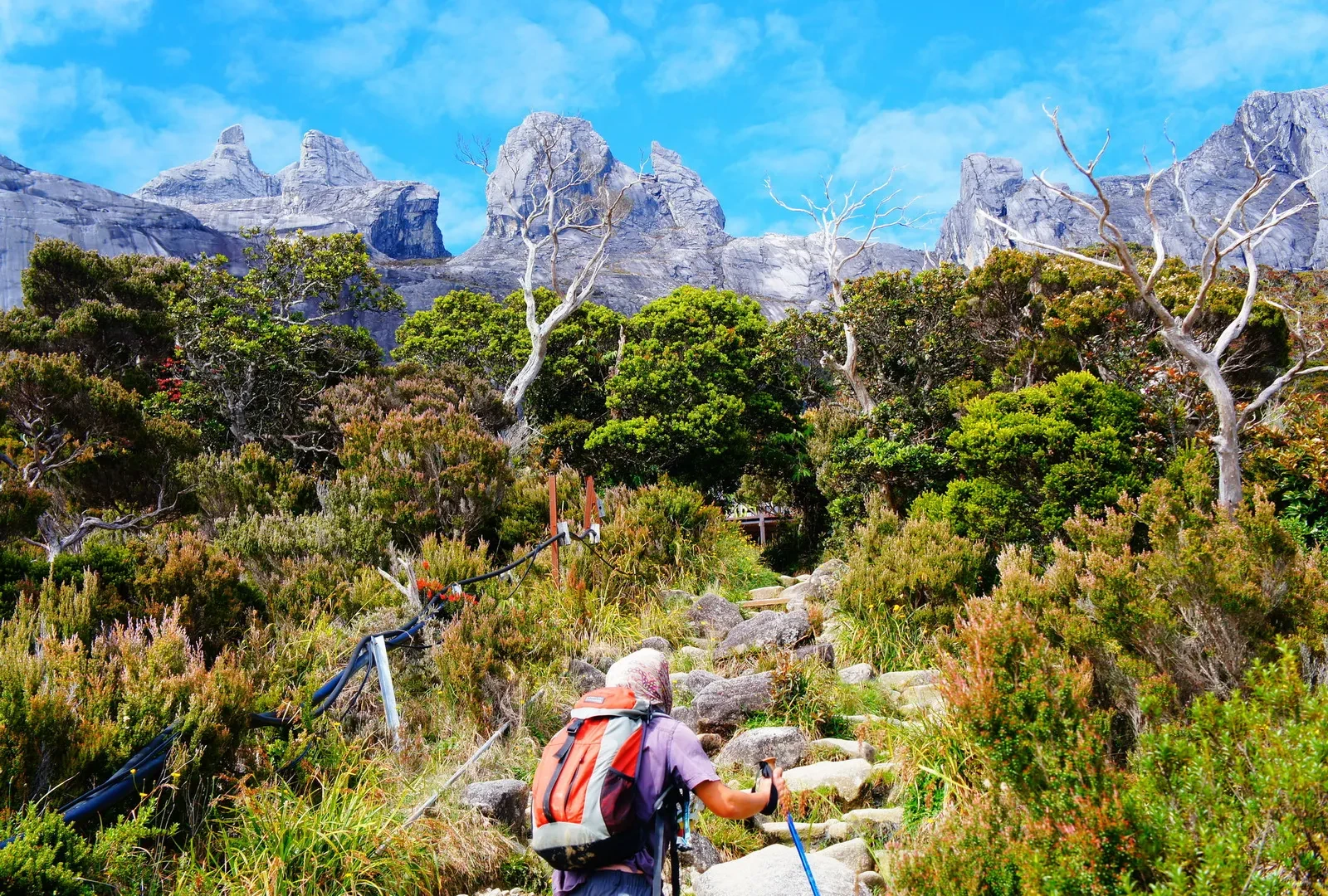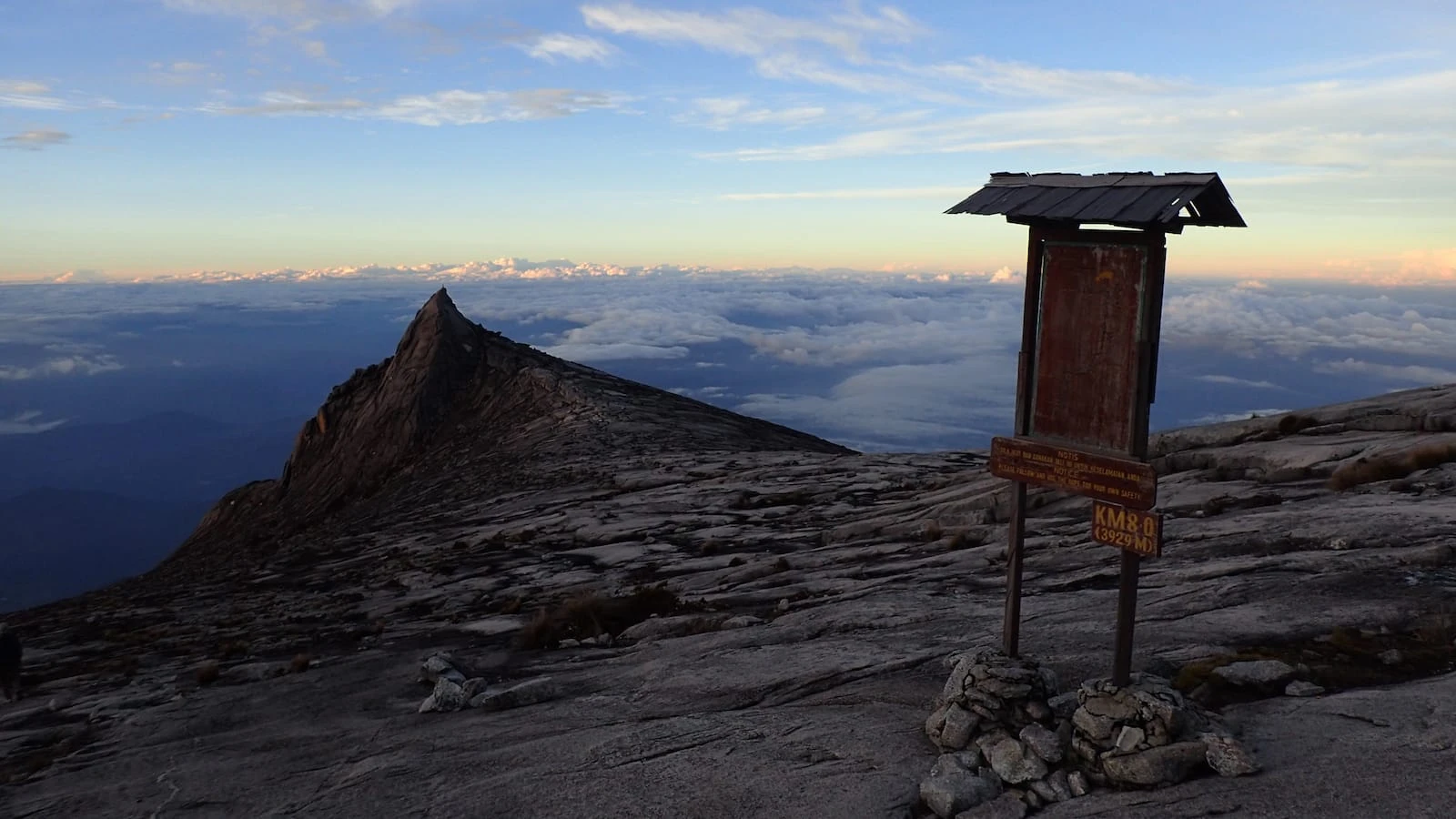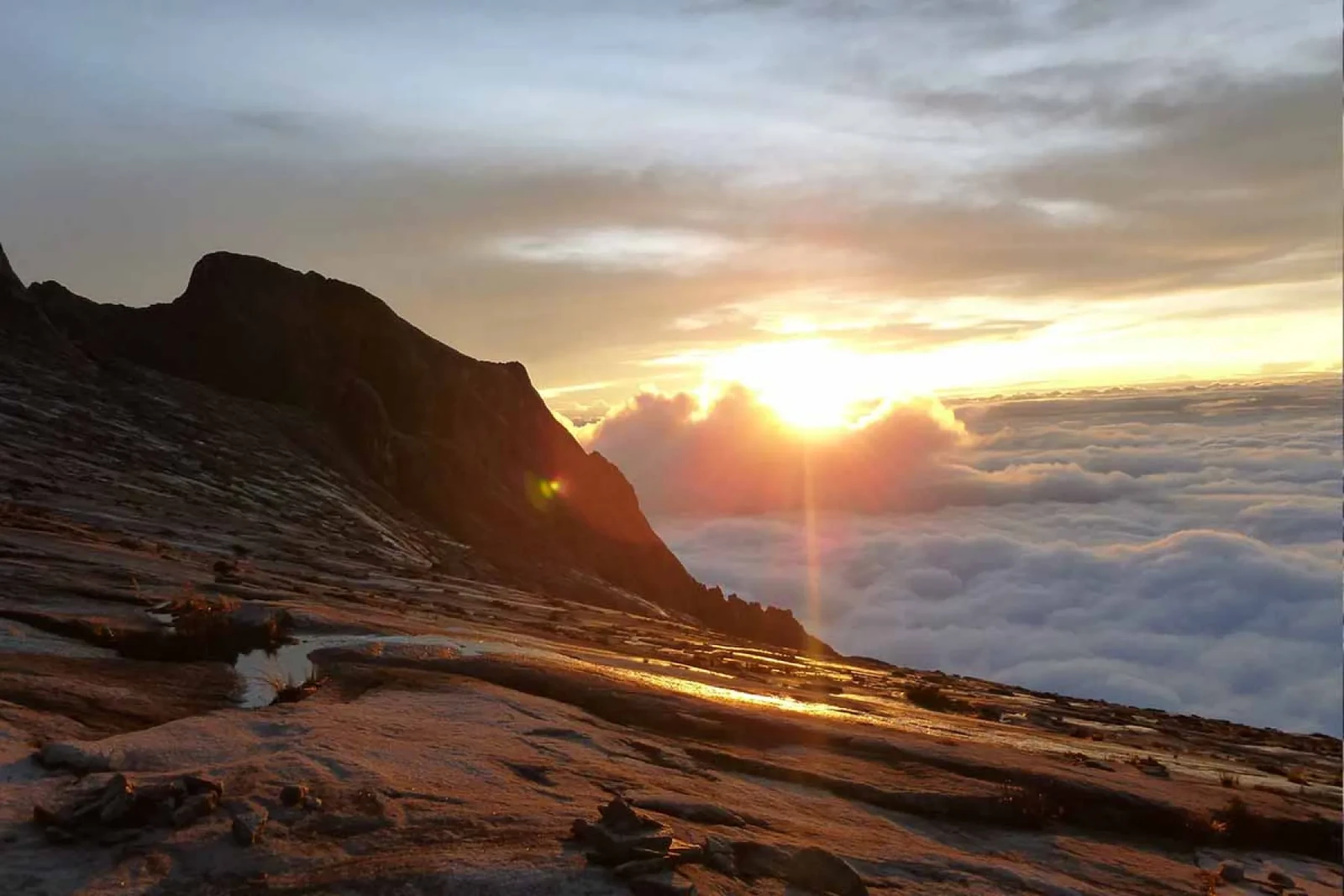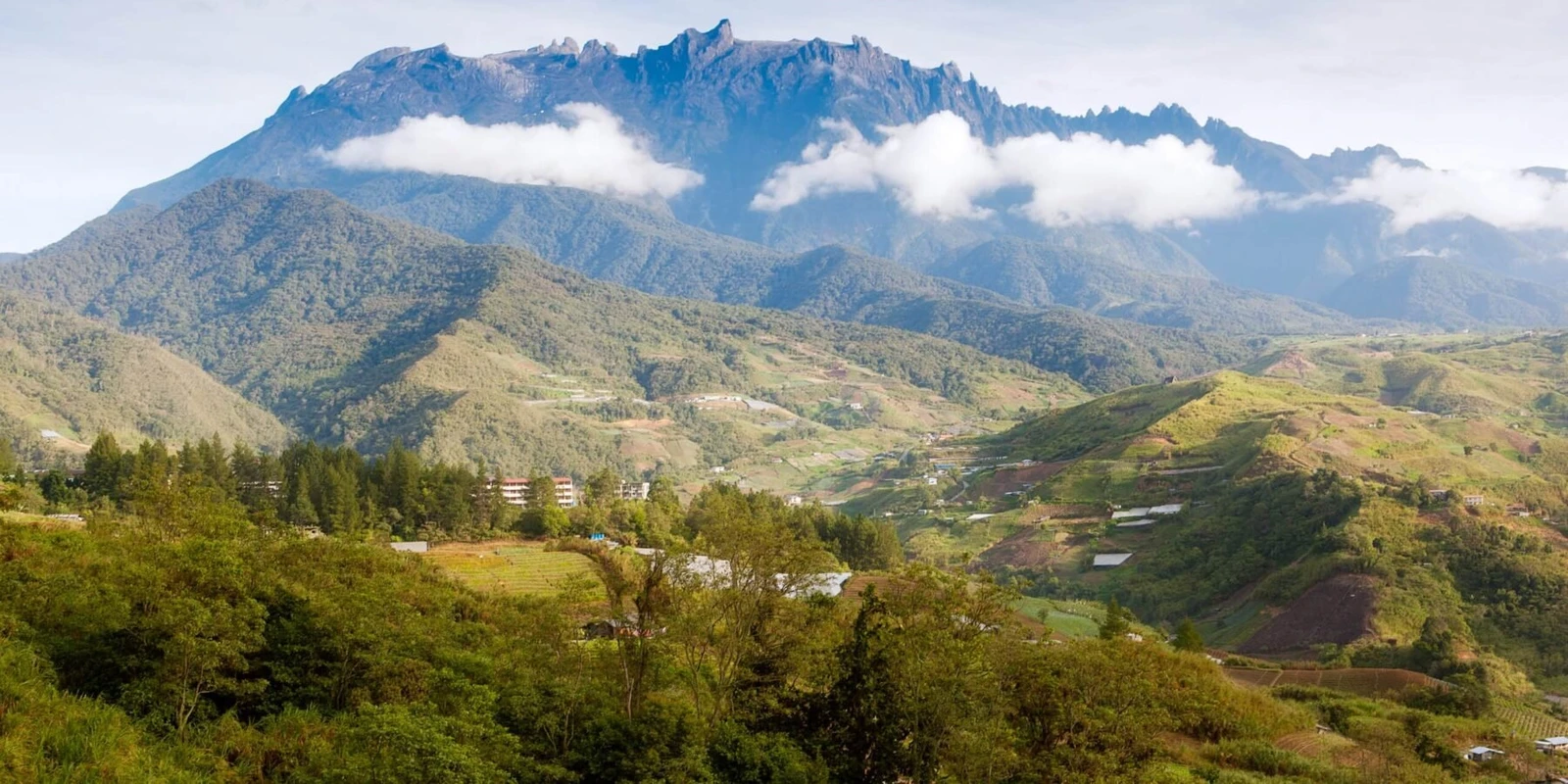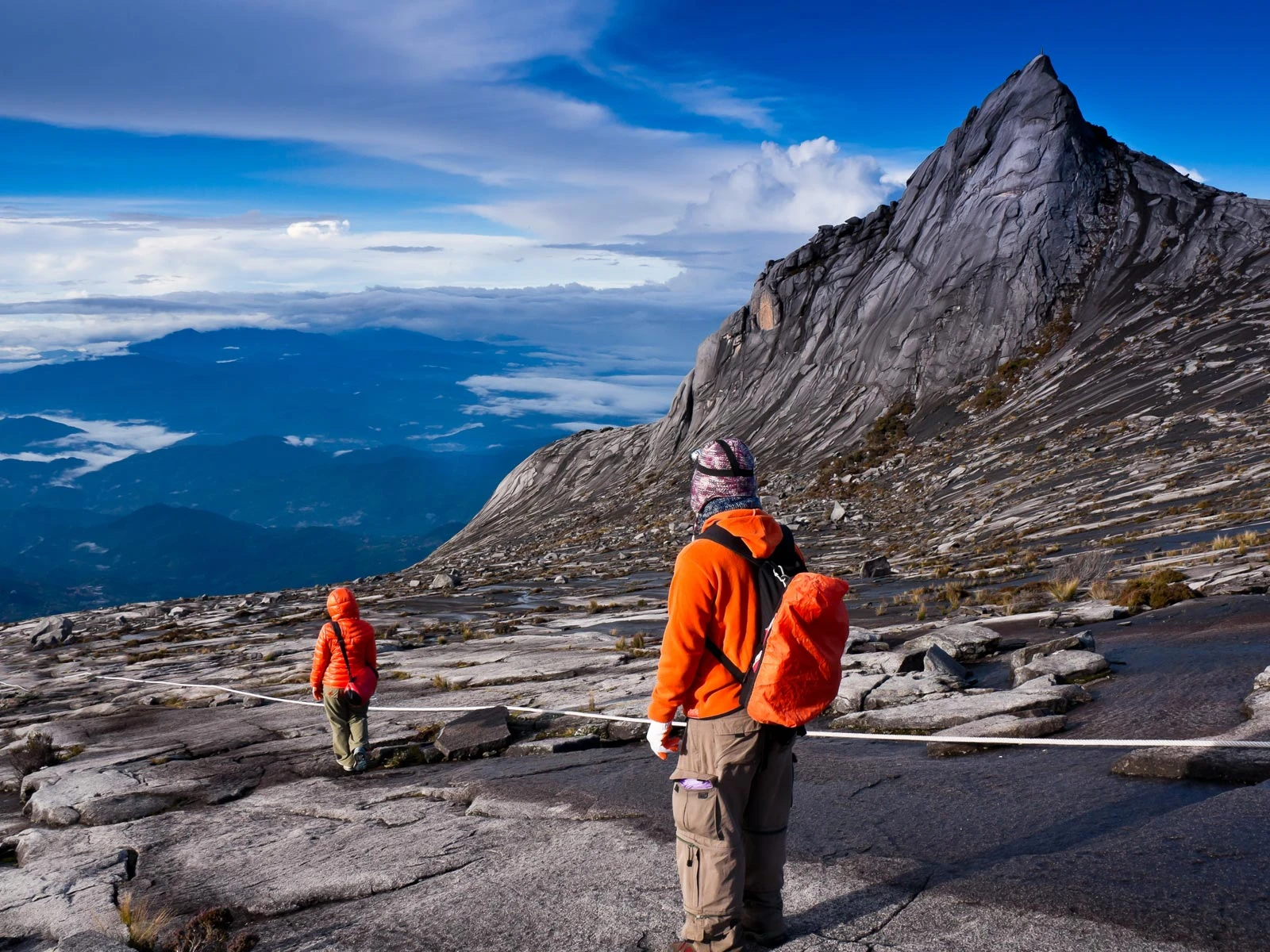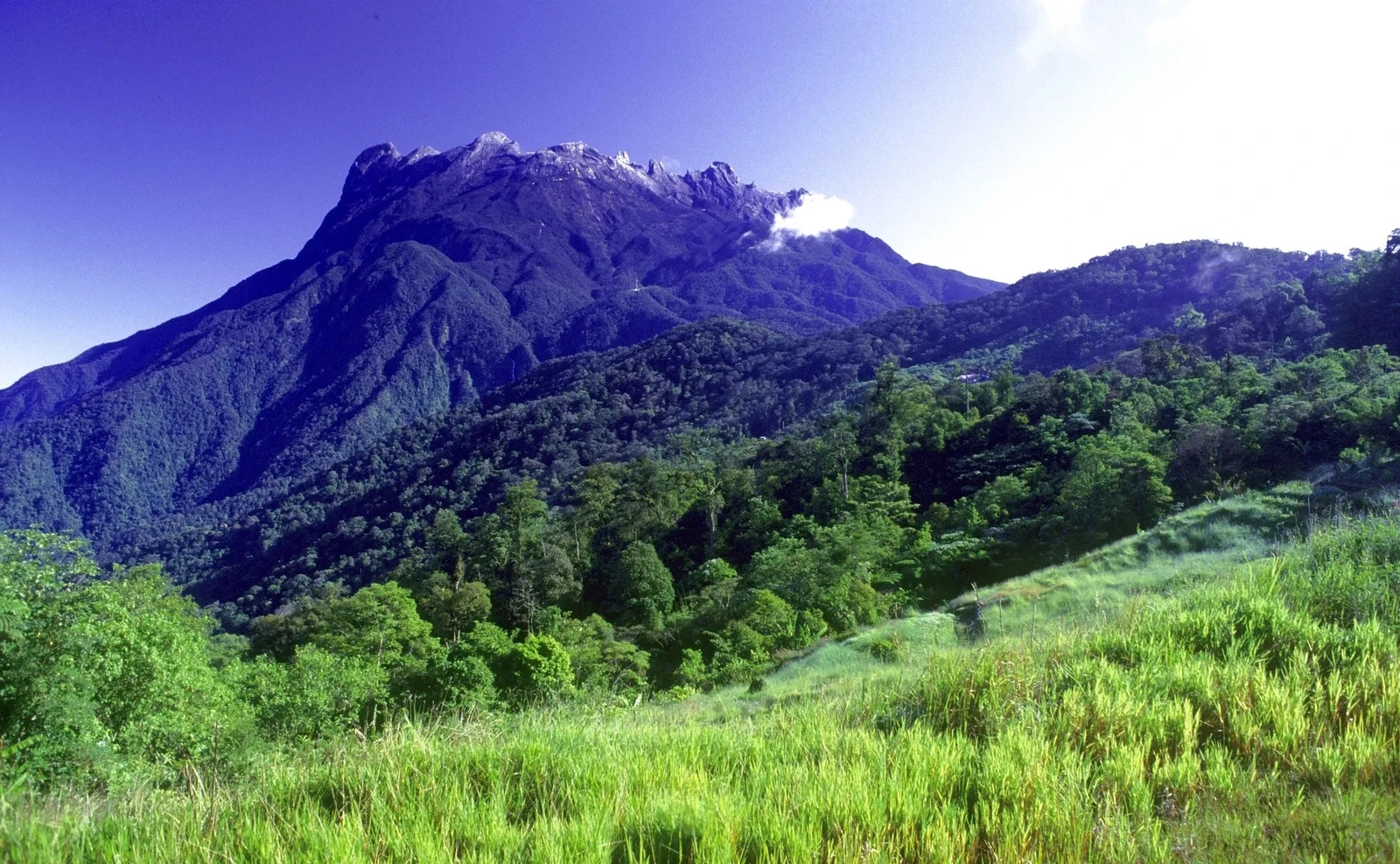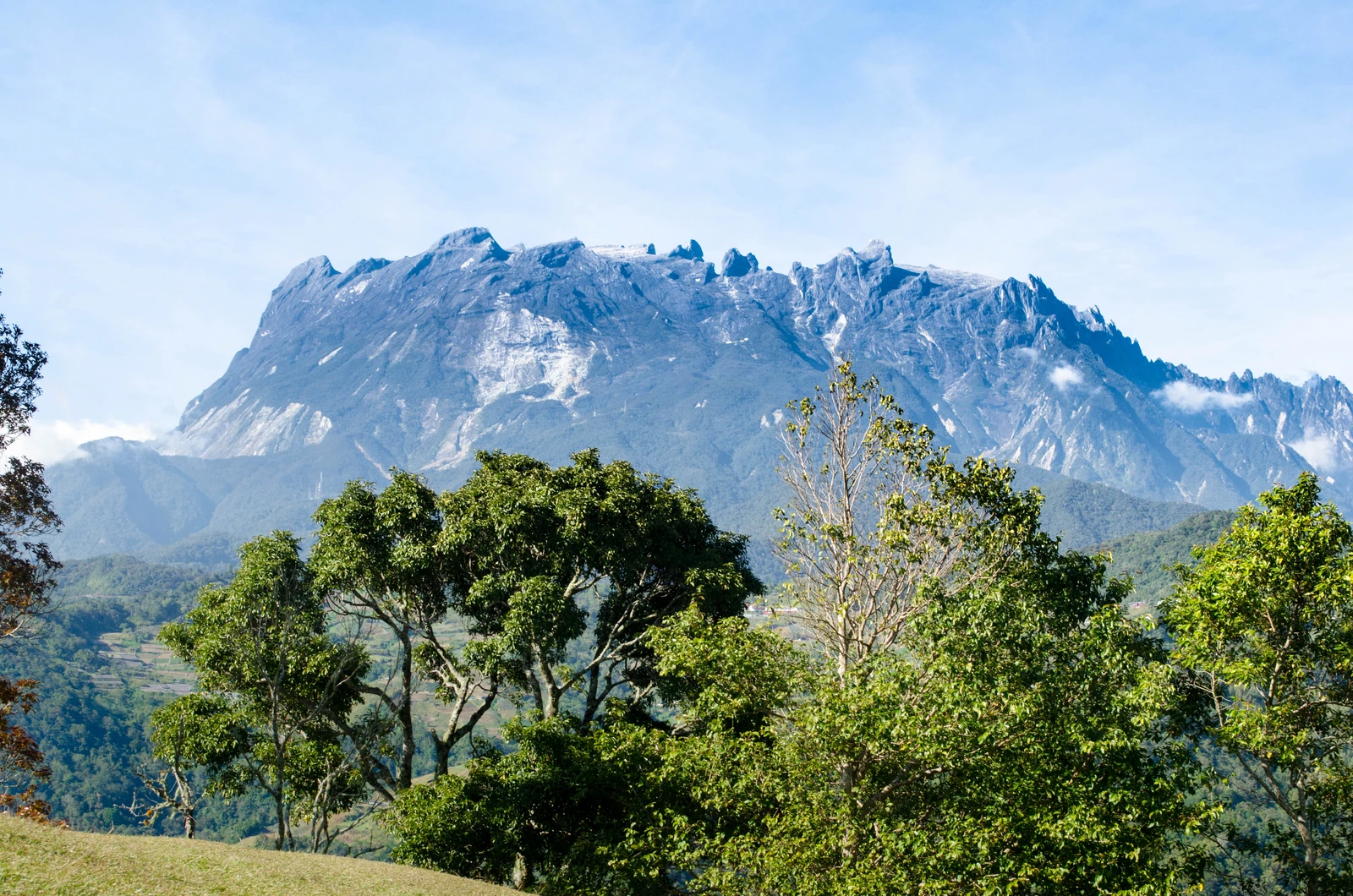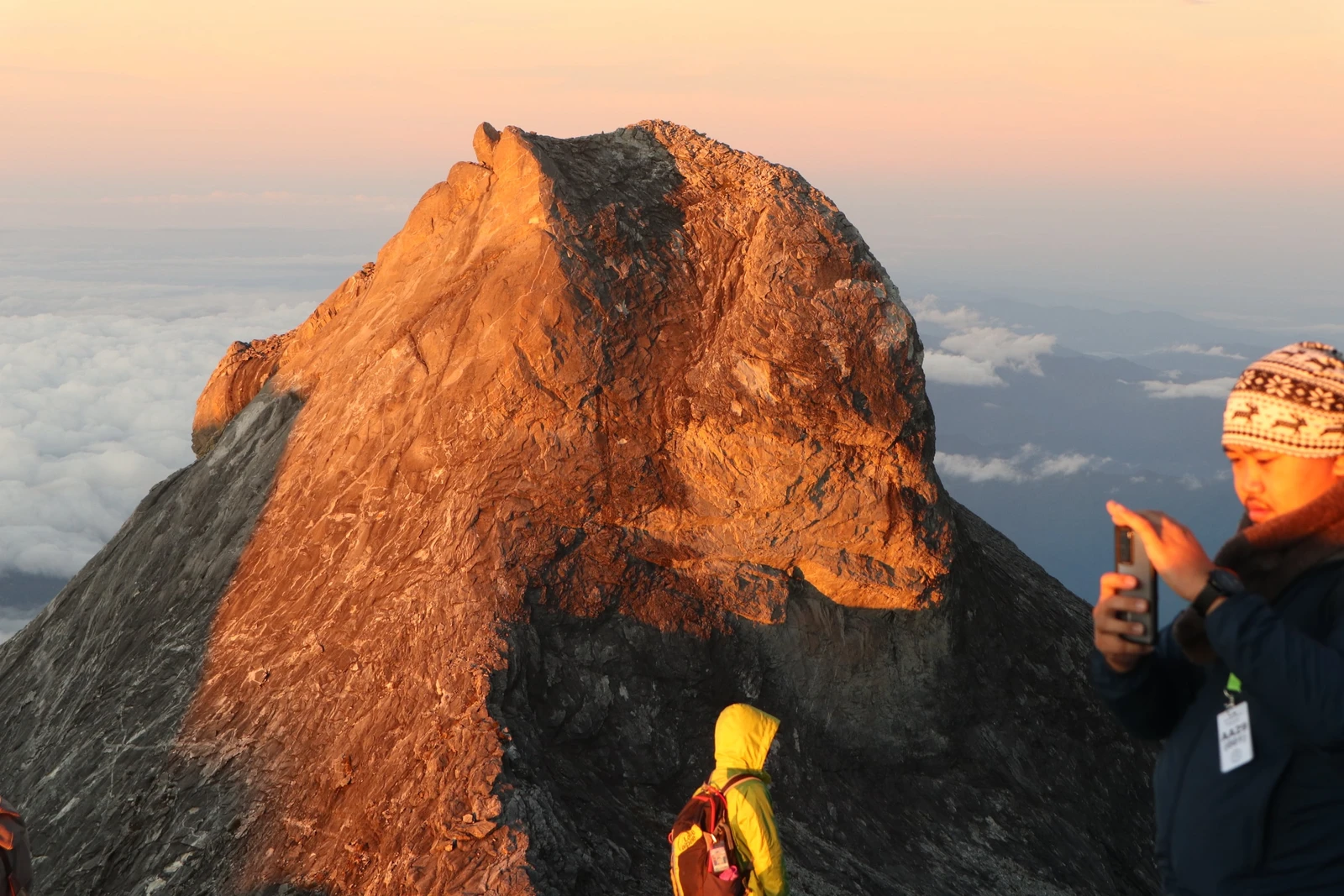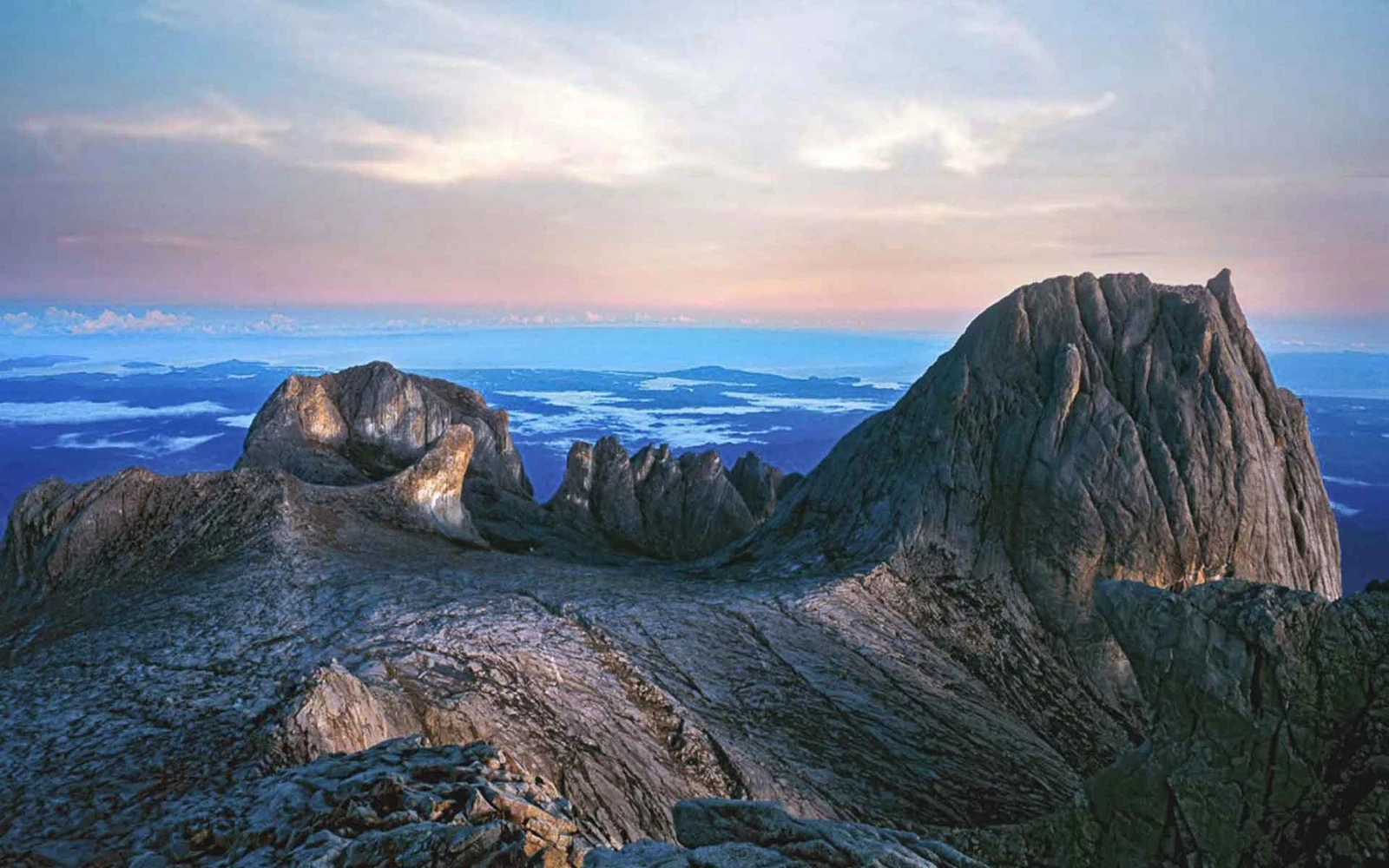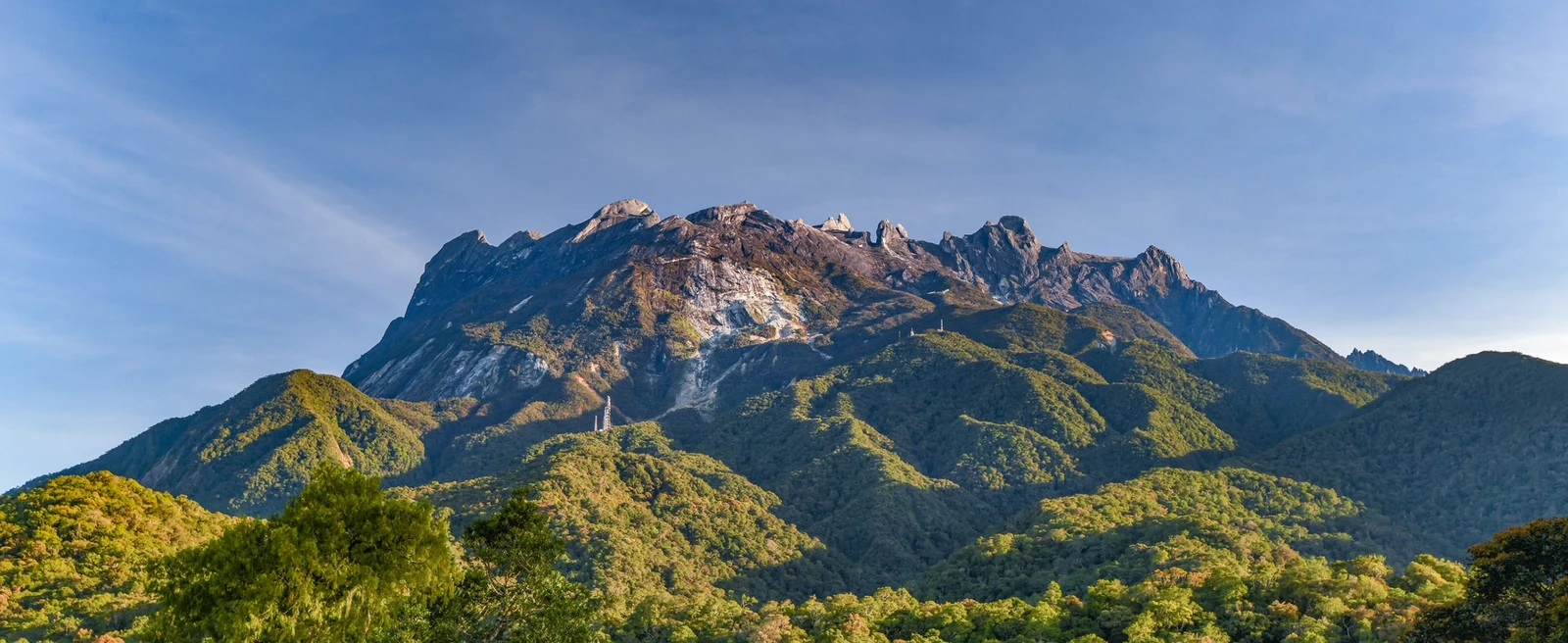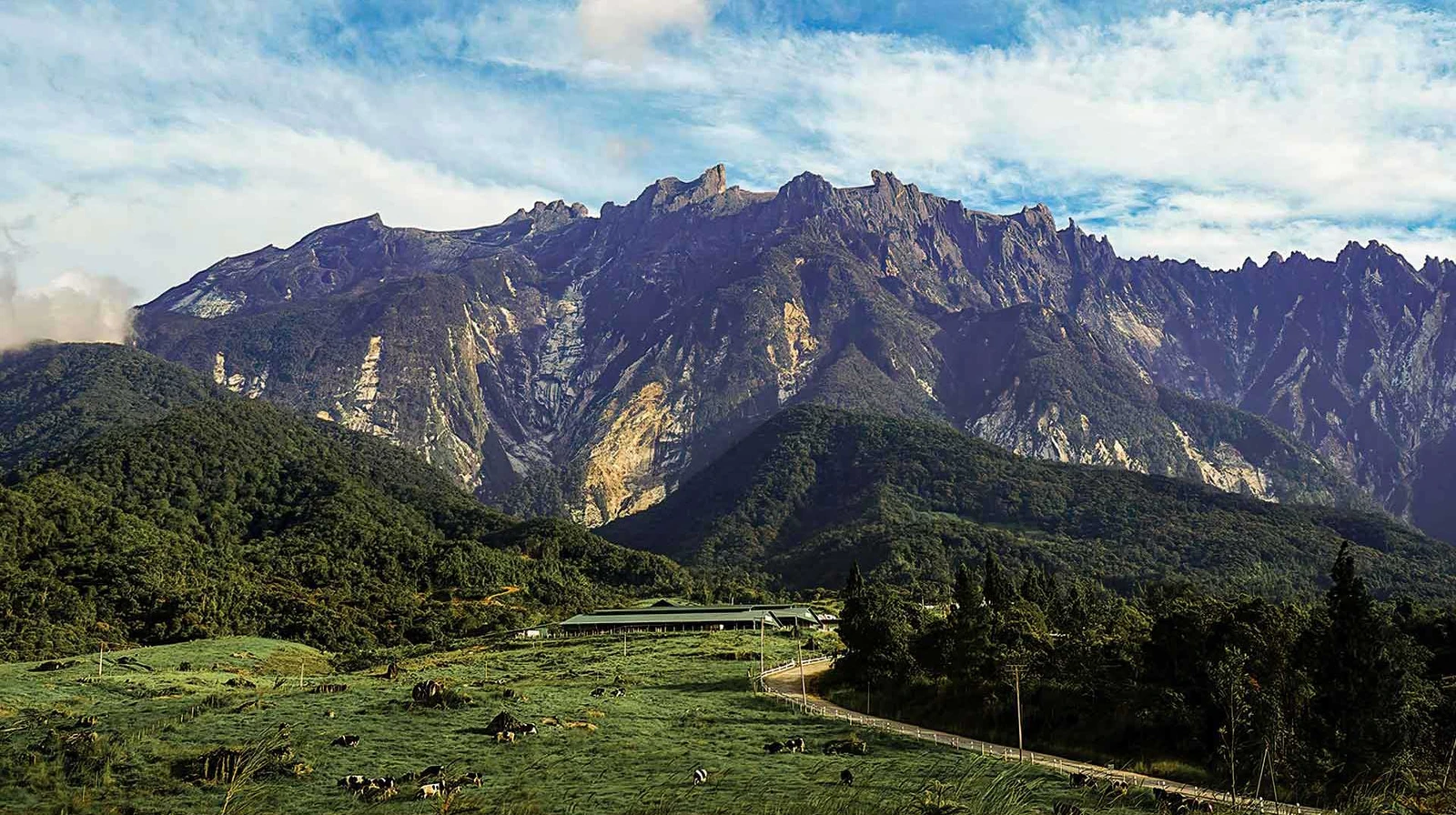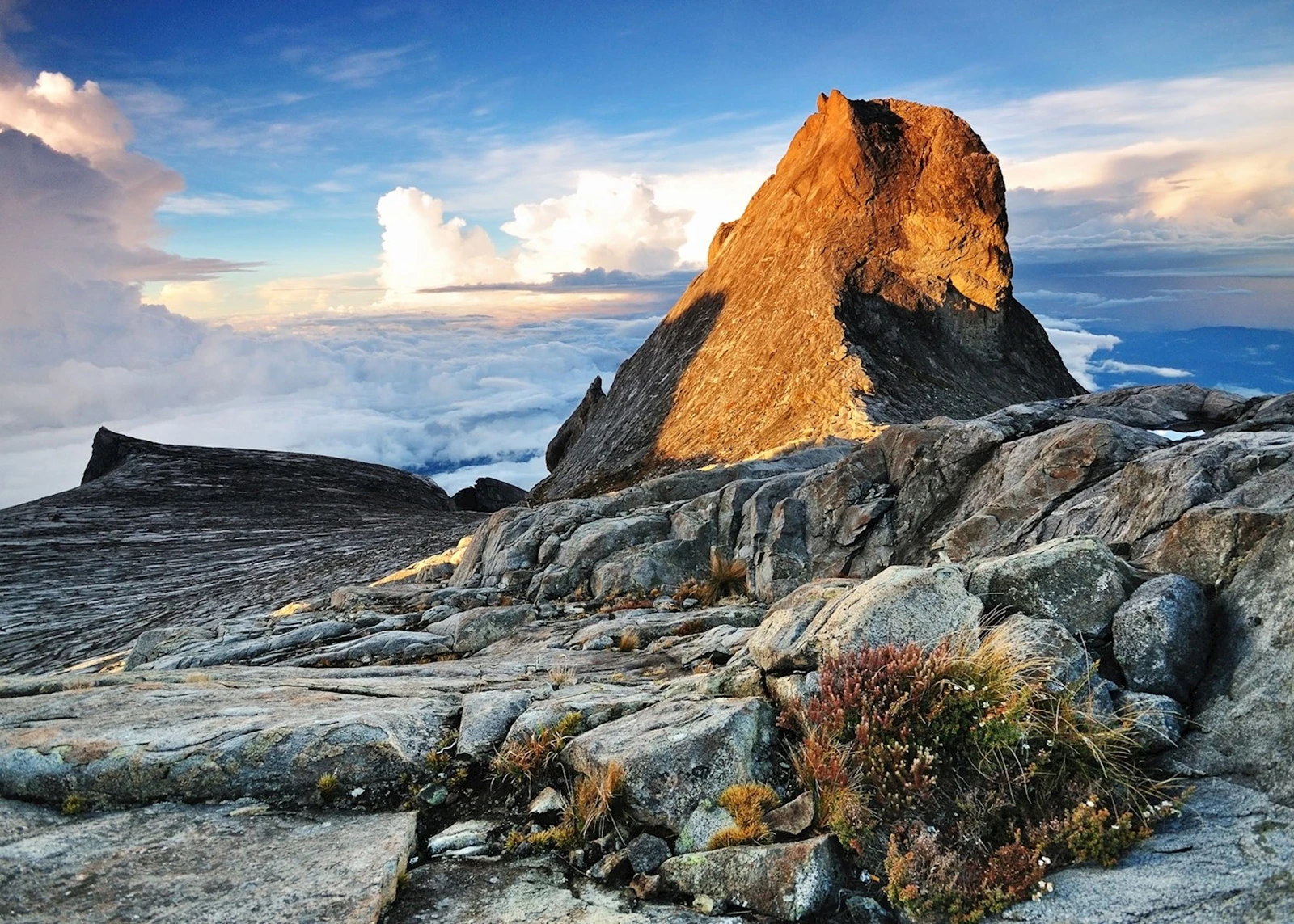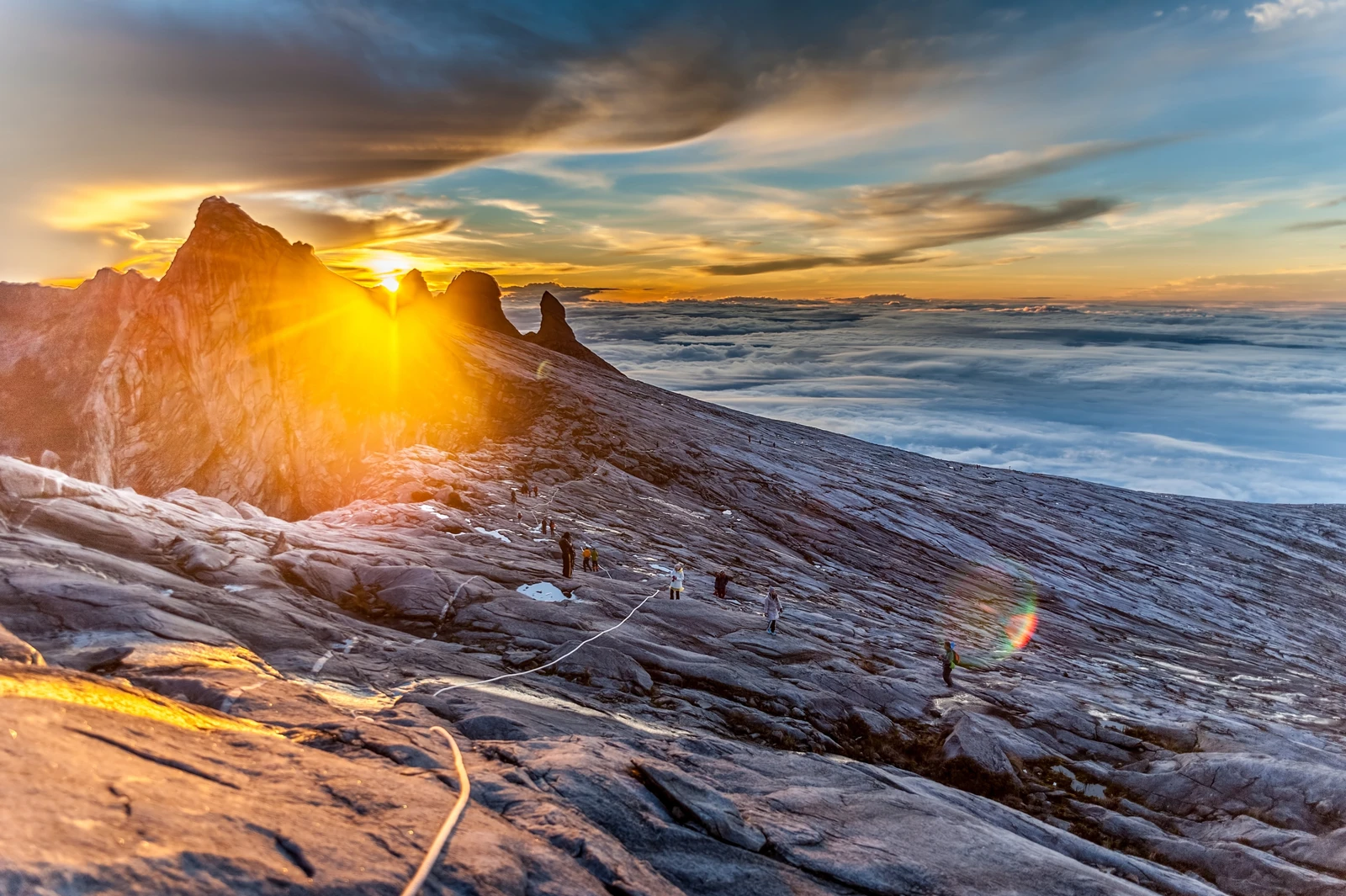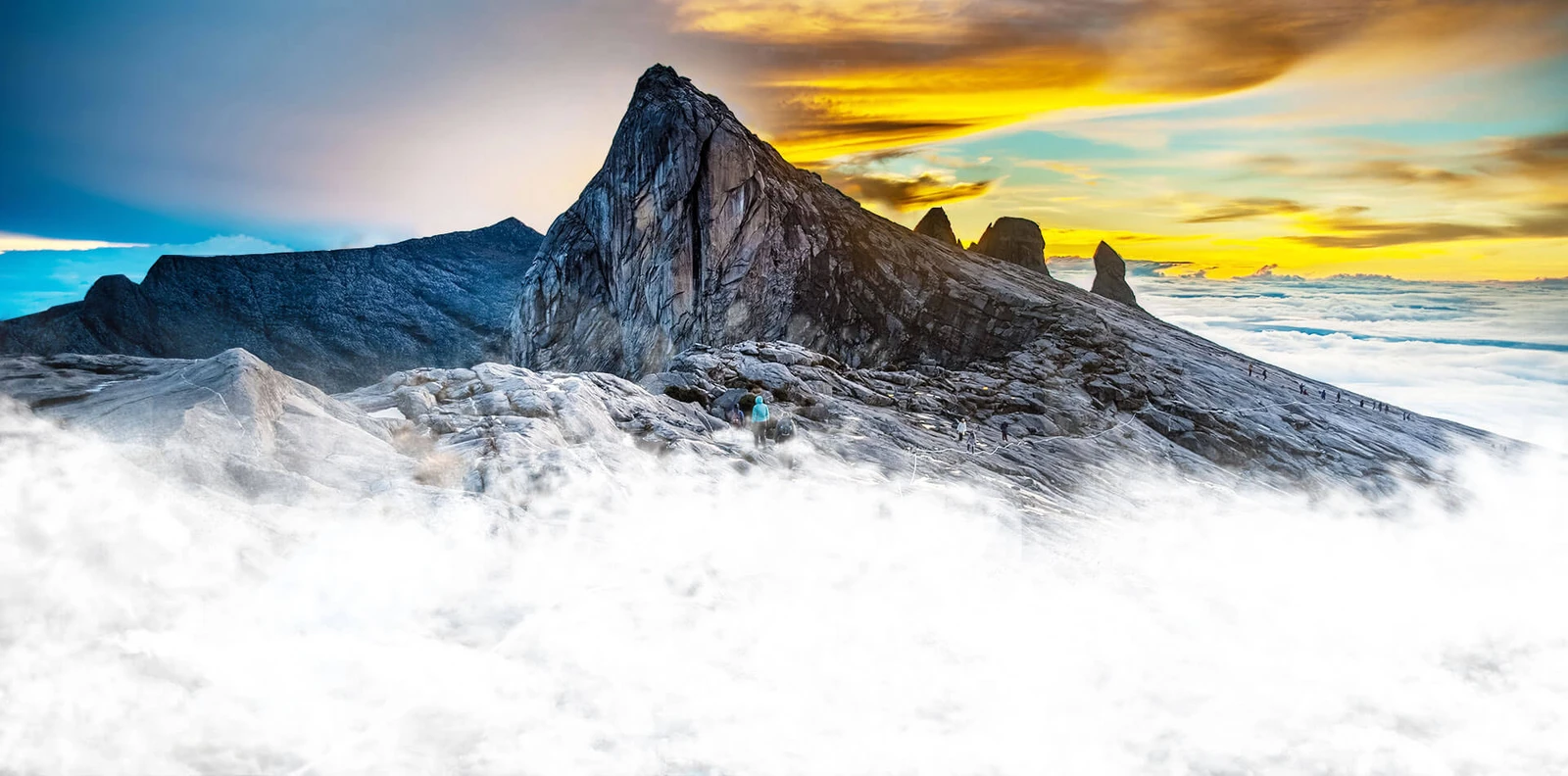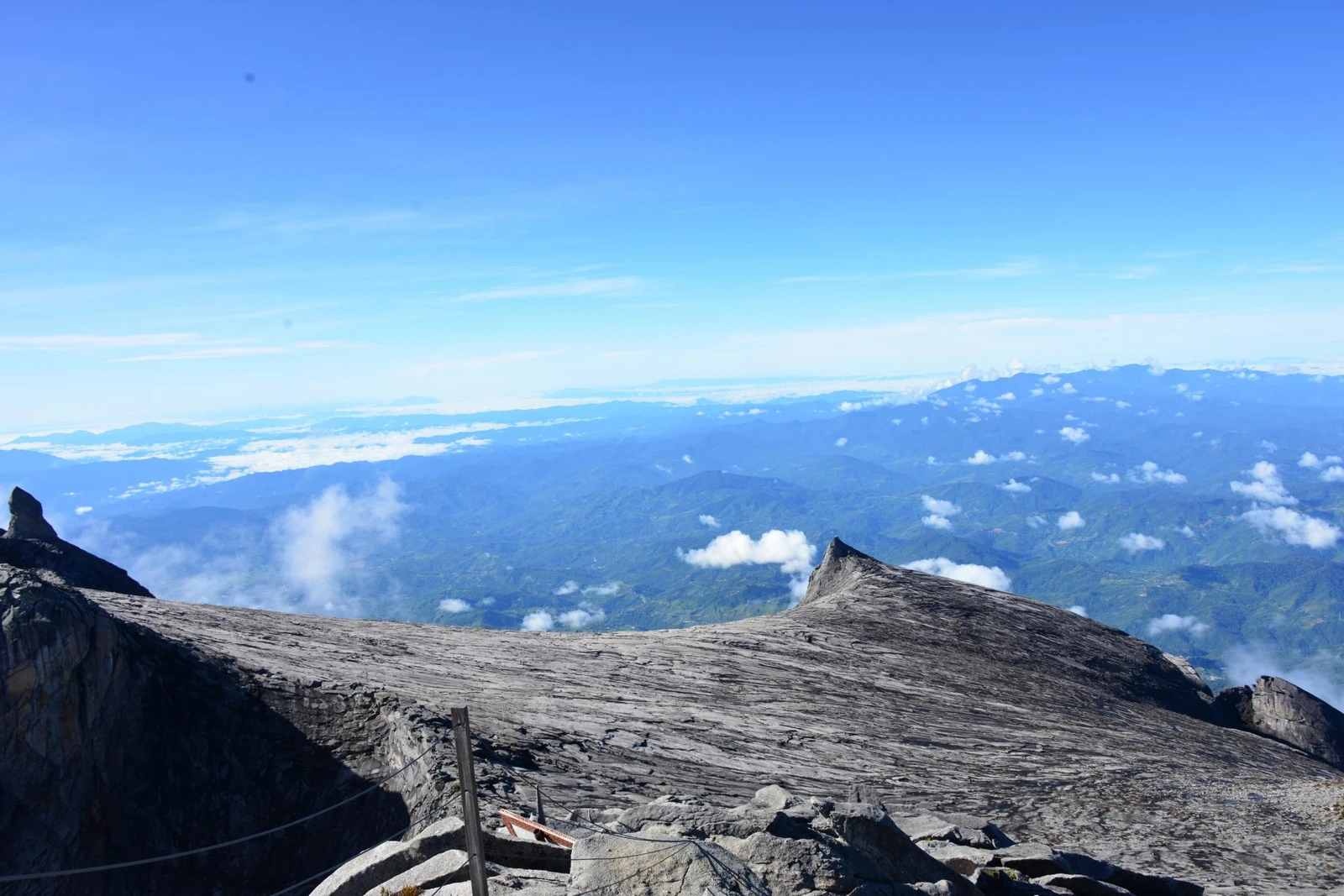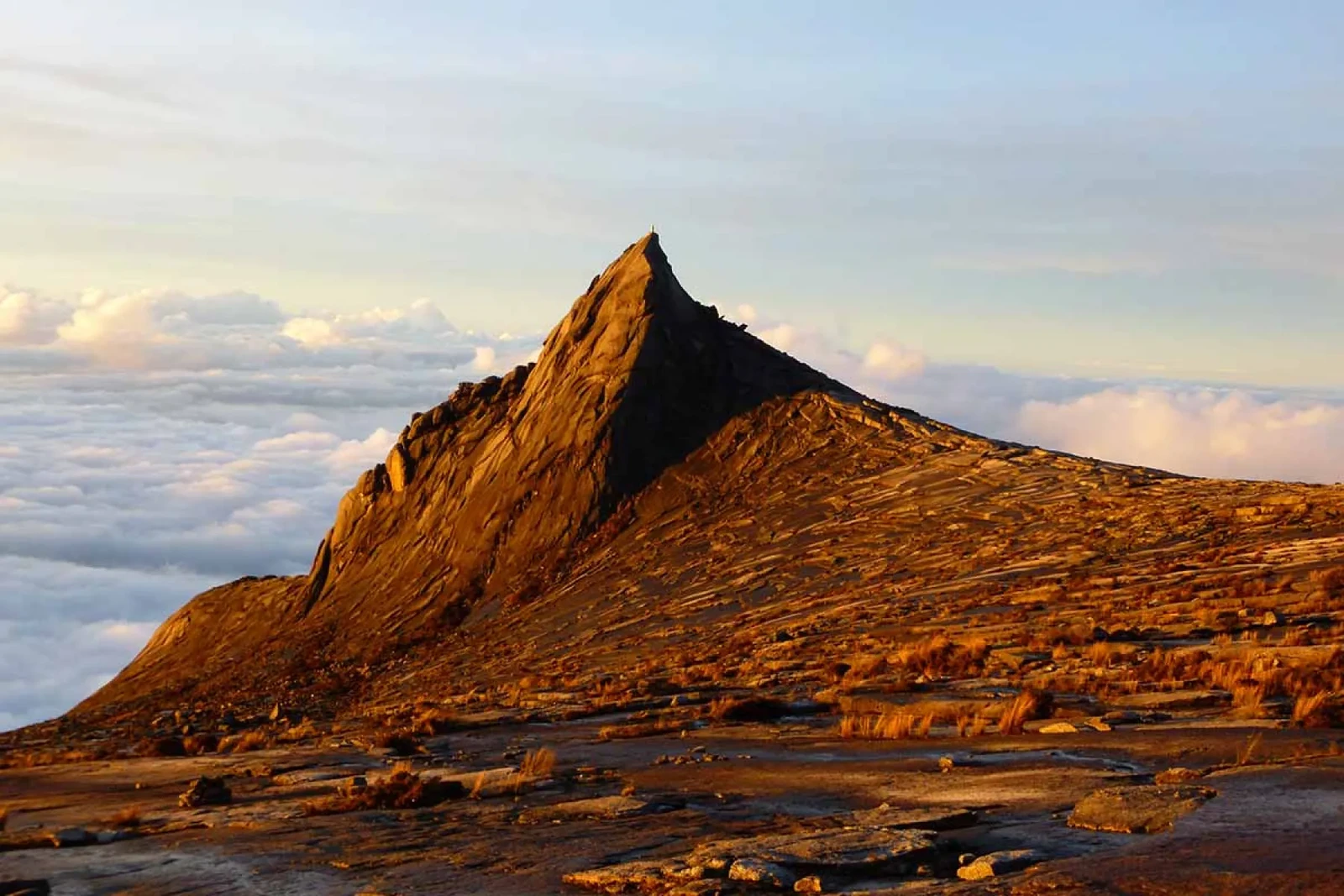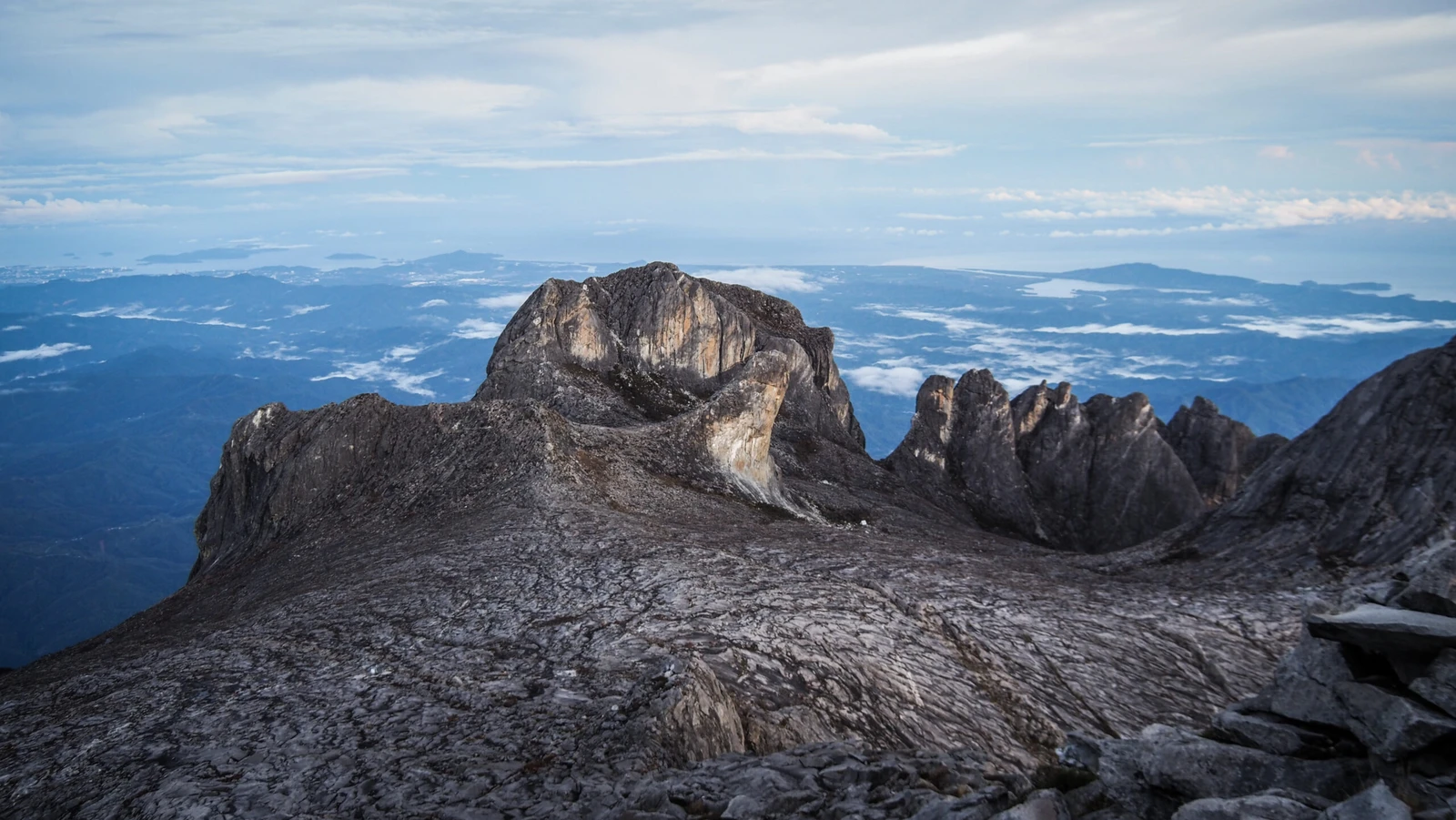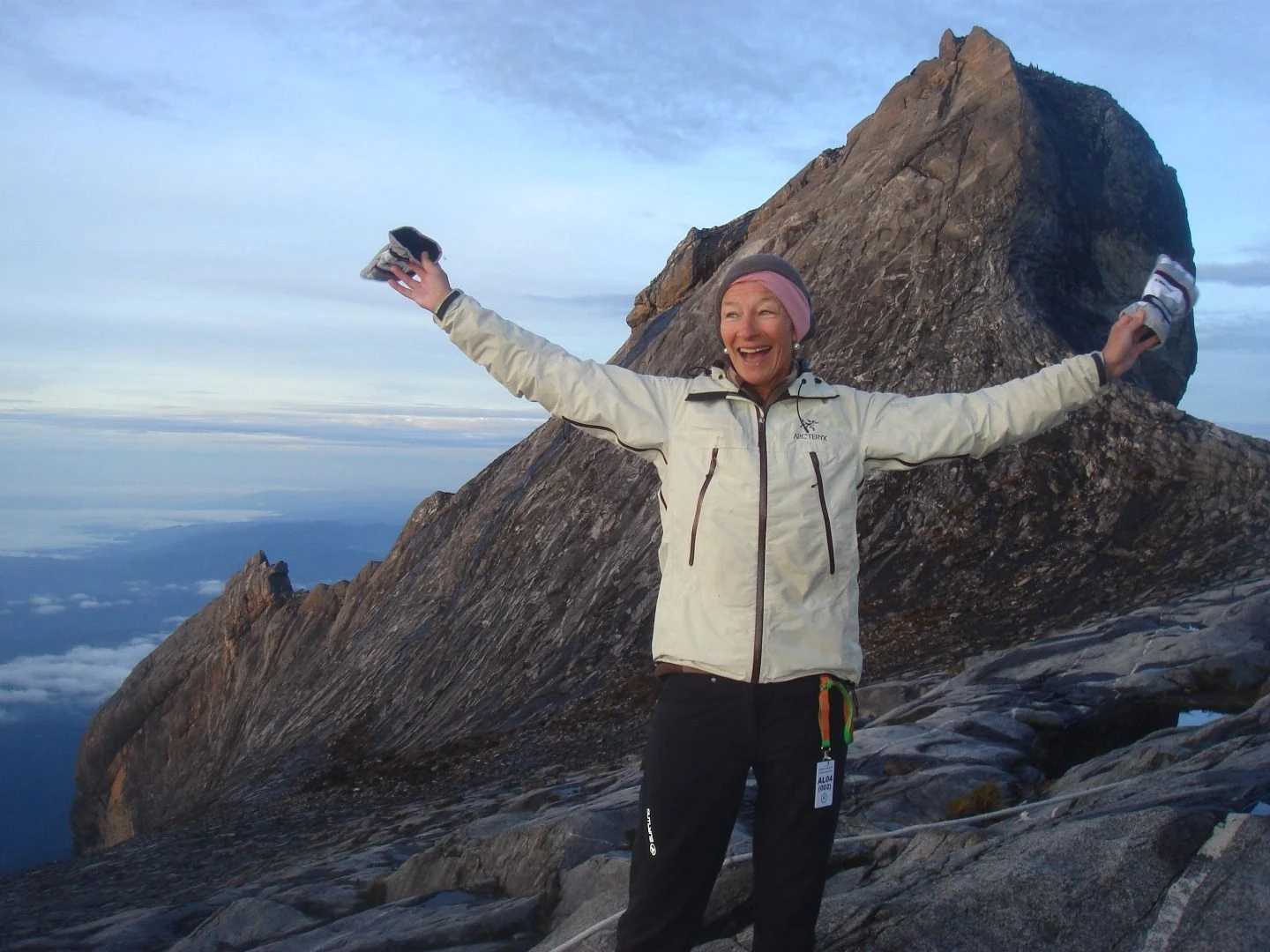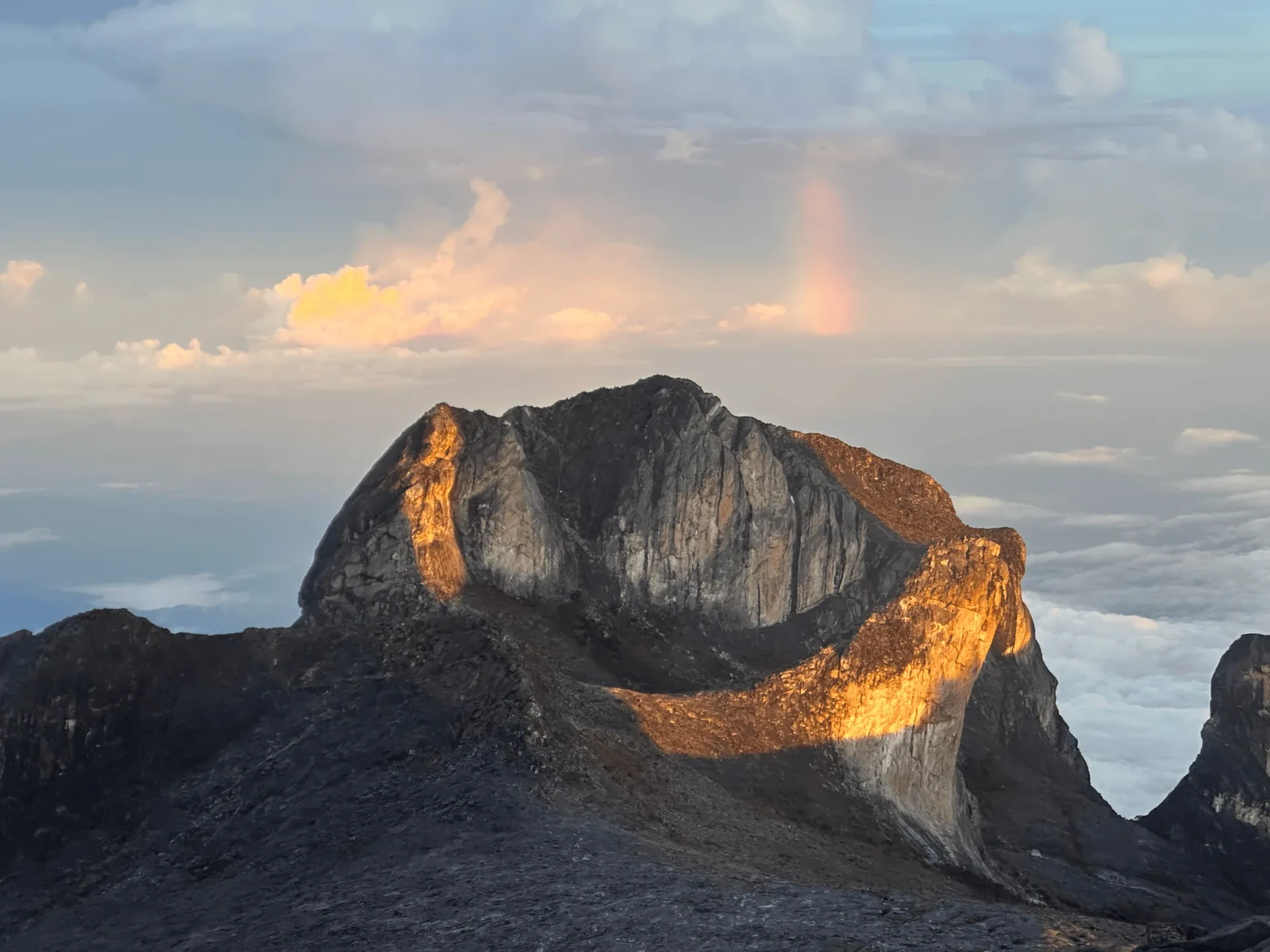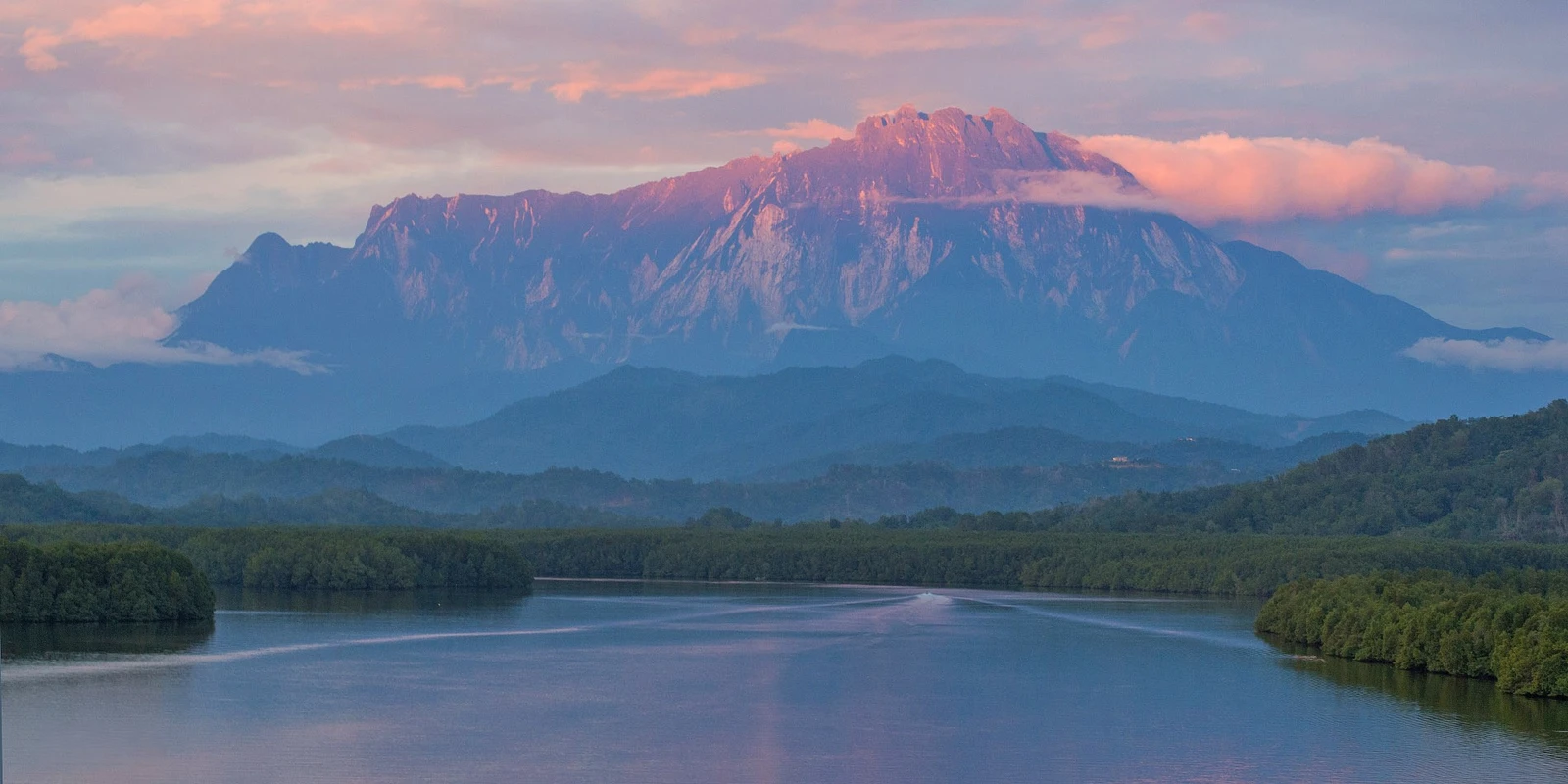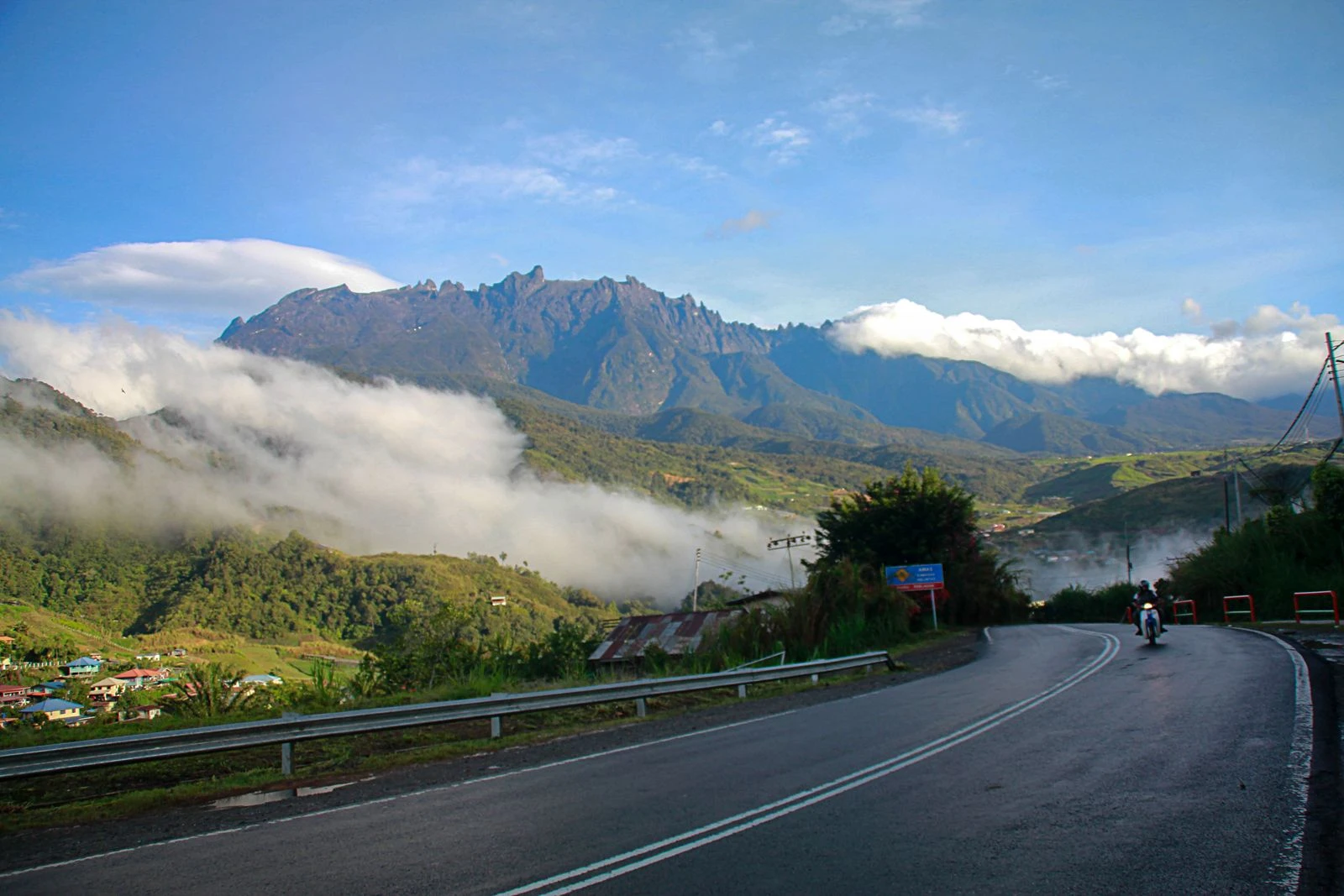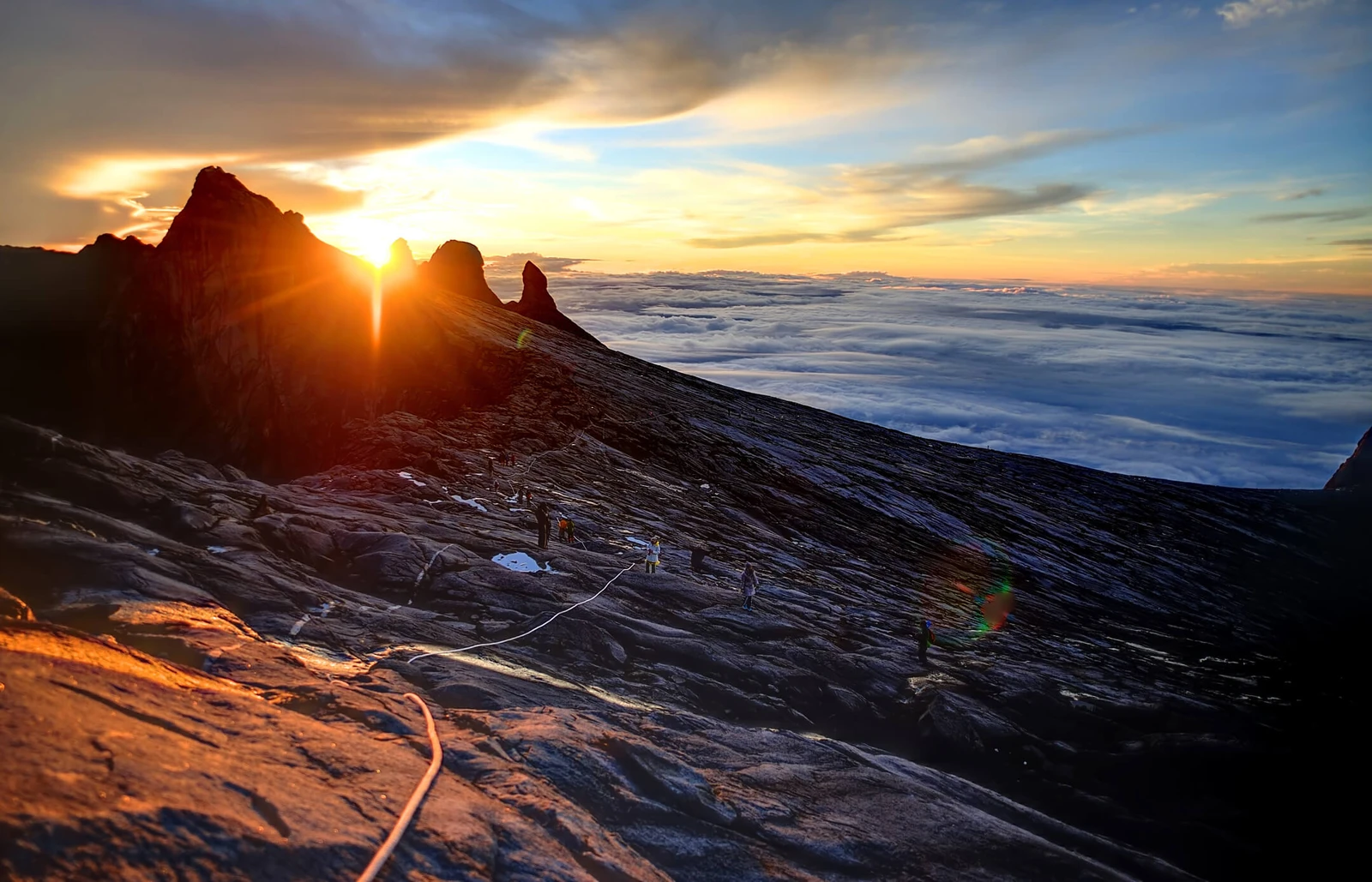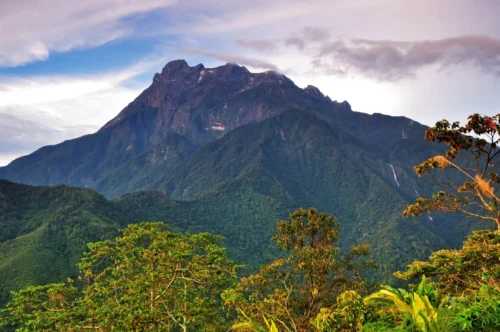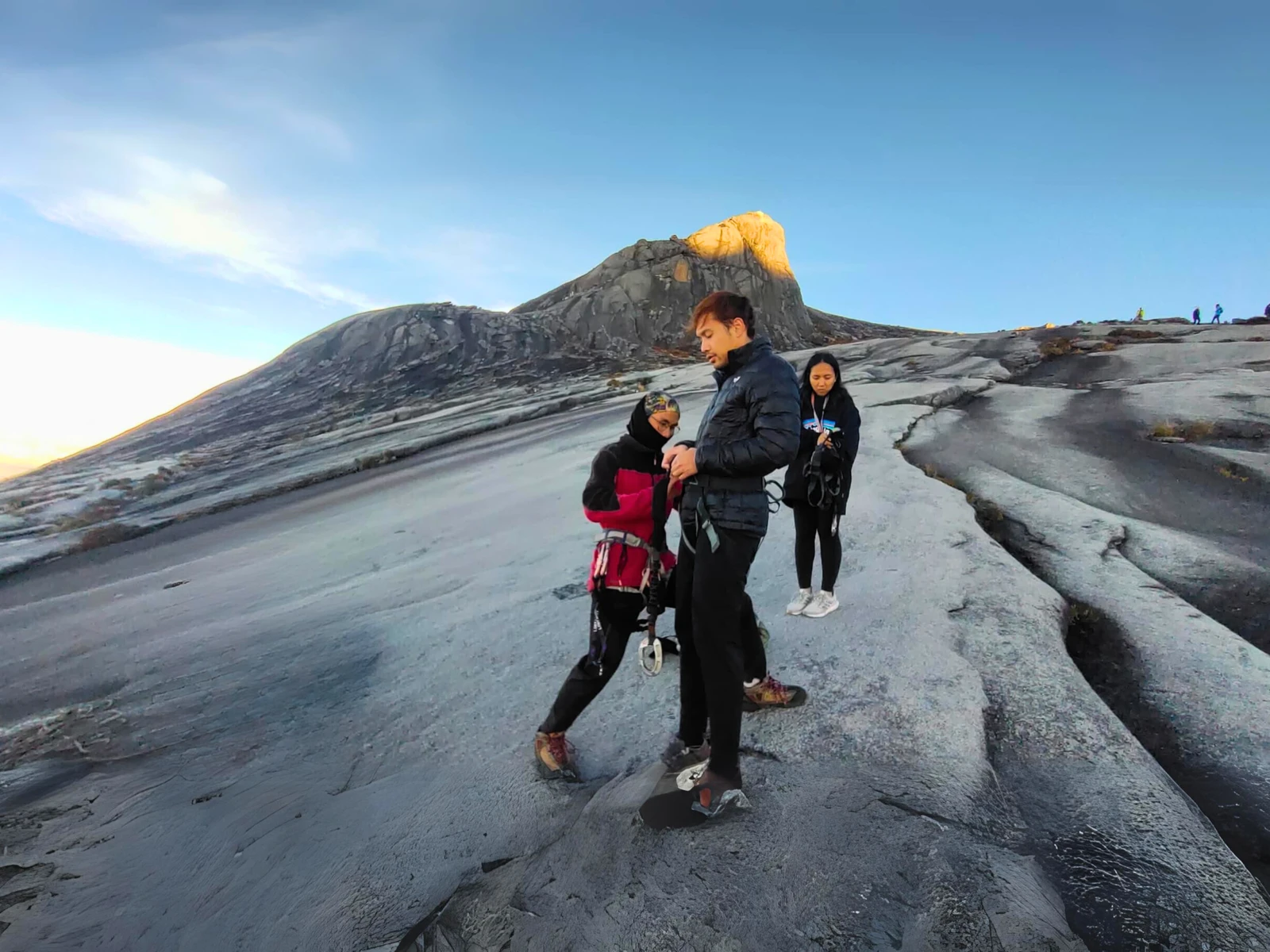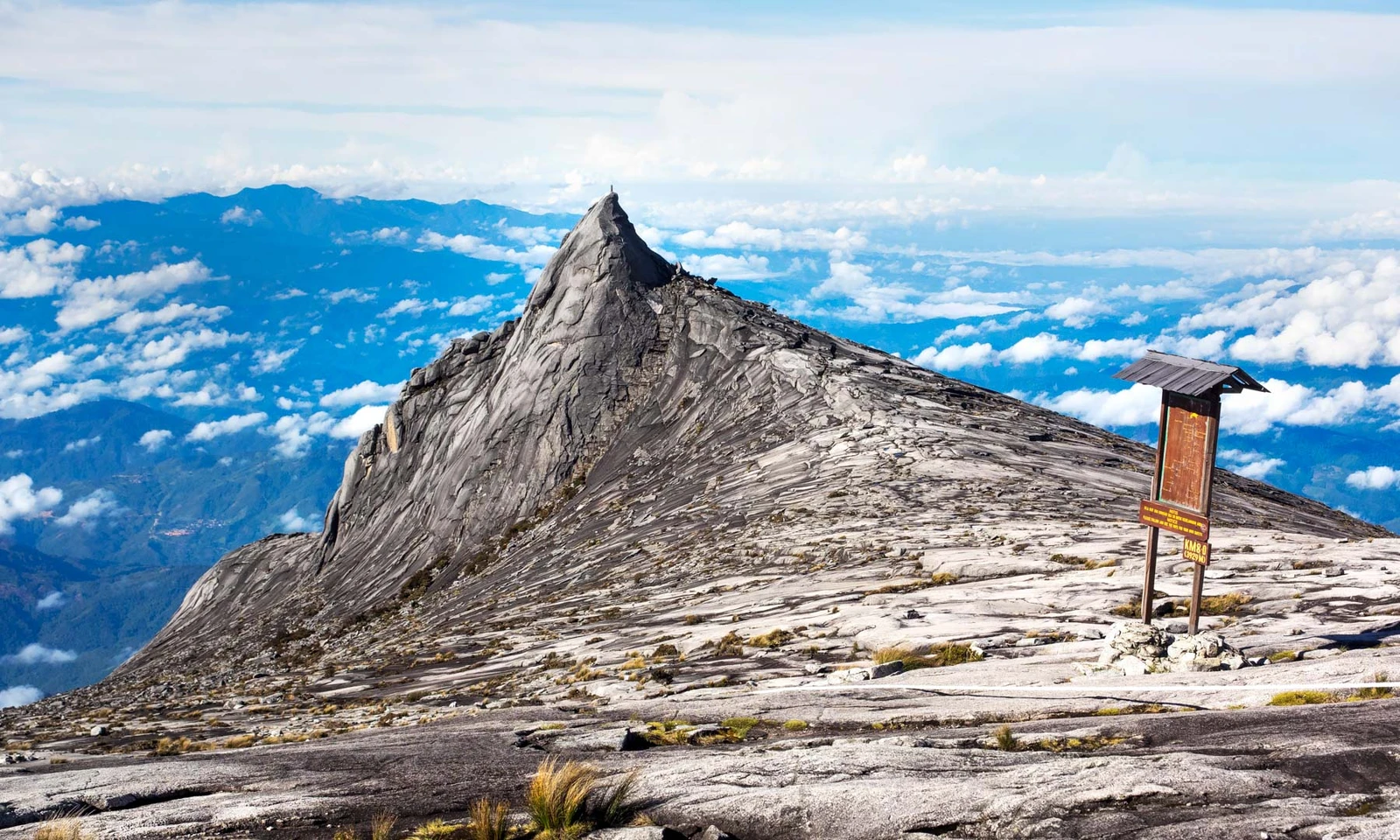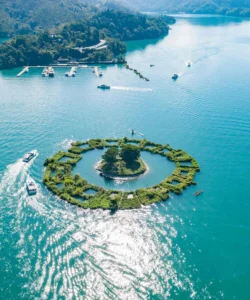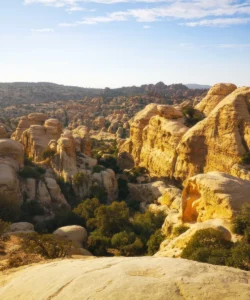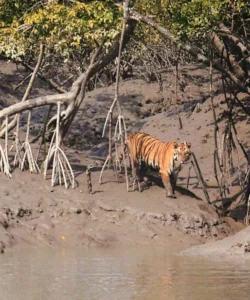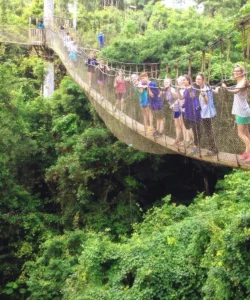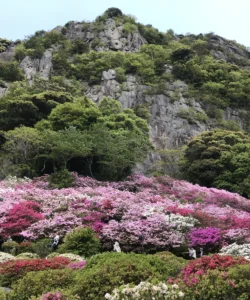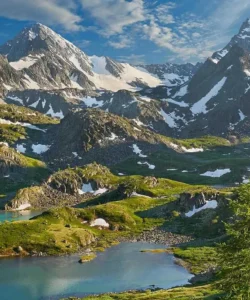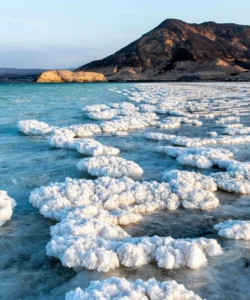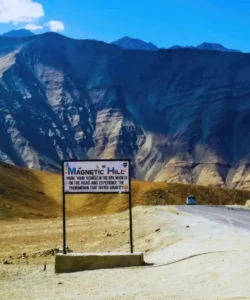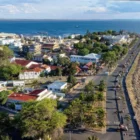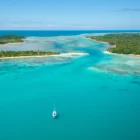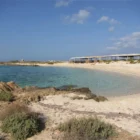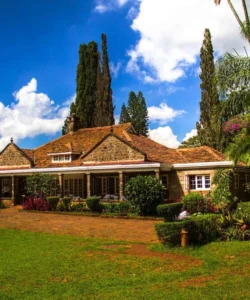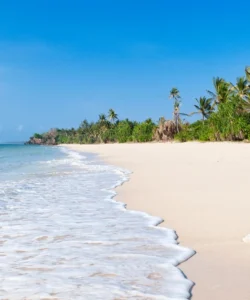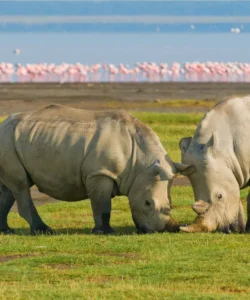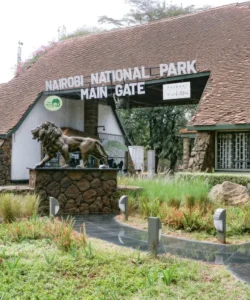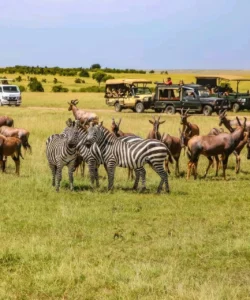Mount Kinabalu, majestically standing in Sabah, East Malaysia, on the island of Borneo, is a towering natural wonder. It’s not just Malaysia’s highest peak, but also a globally significant site for its unique biodiversity and geological history.
Listen to an introduction about Mount Kinabalu

Name: Mount Kinabalu (Malay: Gunung Kinabalu; Kadazan Dusun: Gayo Ngaran or Nulu Nabalu, meaning “the revered place of the dead”)
Address: Mount Kinabalu is located in the Ranau district, West Coast Division of Sabah, Malaysia. It is the central and dominant feature of Kinabalu Park, a UNESCO World Heritage Site. The starting point for climbs is typically Timpohon Gate, near the Kinabalu Park Headquarters.
How to Get There:
- By Air: The most common way is to fly into Kota Kinabalu International Airport (BKI), the capital of Sabah. BKI has direct flights from various cities in Malaysia (like Kuala Lumpur), Singapore, Hong Kong, and other regional hubs.
- From Kota Kinabalu City to Kinabalu Park:
- By Car/Taxi/Ride-Sharing (Grab): It’s approximately a 2 to 2.5-hour drive (about 88 km) from Kota Kinabalu to Kinabalu Park. You can pre-arrange a private transfer, hire a taxi, or use ride-sharing services.
- By Bus/Minibus: Public minibuses or shared taxis are available from Kota Kinabalu, typically departing from Padang Merdeka (Merdeka Square) or the Long-Distance Bus Terminal. This is a more budget-friendly option but less flexible.
- Within Kinabalu Park: Once at the Kinabalu Park Headquarters, climbers are usually transferred by minivan a short distance to Timpohon Gate, the official starting point for the summit climb.
Landscape and Architecture:
Mount Kinabalu’s landscape is incredibly diverse, transitioning through several distinct vegetation zones as you ascend. Its “architecture” is purely natural, sculpted by ancient geological forces.
- Massive Granite Pluton: The mountain itself is a massive granodiorite pluton, a type of intrusive igneous rock, formed deep within the Earth and later exposed by tectonic uplift and erosion. It’s considered one of the youngest granitic intrusions exposed on Earth (formed around 15 million years ago and uplifted about 1 million years ago). Its summit, Low’s Peak (4,095.2 meters / 13,435 feet), is a dramatic bare granite dome with distinctive glacier-carved pinnacles and gullies (like the impressive Low’s Gully), a result of past ice ages.
- Diverse Vegetation Zones: The mountain’s immense altitudinal range (from 152m to 4,095m) creates a remarkable gradient of habitats:
- Lowland Rainforest: At the base, lush tropical rainforest with giant trees and abundant flora.
- Montane Forest: As you climb, this transitions to cloud forests, mossy forests, and areas with unique pitcher plants and orchids.
- Sub-Alpine Forest and Scrub: Near the higher elevations, the vegetation becomes stunted and hardy, adapting to colder, harsher conditions.
- Alpine Meadow: The very highest reaches feature sparse, hardy plants before giving way to the bare granite.
- Waterfalls and Streams: Numerous cool streams and small waterfalls cascade down the mountain’s slopes.
- Rest Huts and Trails: While not “architecture” in the traditional sense, the mountain features well-maintained climbing trails (primarily the Ranau Trail and Kota Belud Trail from Panalaban) and several mountain huts at Panalaban (Laban Rata Resthouse, Pendant Hut) around 3,200m (10,500 ft). These rustic accommodations provide a crucial overnight stop for climbers, offering basic shelter, meals, and warmth (some with heated dormitories/rooms).
What Makes It Famous:
- Highest Mountain in Malaysia and Borneo: It is undeniably the tallest peak in Malaysia and on the island of Borneo, a significant national landmark.
- UNESCO World Heritage Site and Global Geopark: Kinabalu Park, encompassing the mountain, was declared a UNESCO World Heritage Site in 2000 for its “outstanding universal values” and its role as one of the most important biological sites globally. In 2023, it also became a UNESCO Global Geopark.
- Exceptional Biodiversity: Mount Kinabalu is a biodiversity hotspot. It boasts an astonishing array of flora and fauna, including an estimated 5,000-6,000 species of vascular plants (more than all of Europe and North America combined, excluding tropical Mexico). This includes over 1,000 orchid species, 60 species of ferns, and famous species like the giant Rafflesia flower (the world’s largest flower) and numerous endemic pitcher plant species. It’s also home to over 320 bird species and over 100 mammalian species, though larger animals are rarer on the mountain itself.
- Accessible Summit Climb: Despite its impressive height, Mount Kinabalu is known as one of the “safest and most conquerable peaks in the world” for non-technical climbers. It doesn’t require specialized mountaineering skills, but a good level of physical fitness is essential. The two-day, one-night trek is a popular challenge for adventurers.
- Cultural and Spiritual Significance: For the indigenous Kadazandusun people of Sabah, Mount Kinabalu is a sacred place, believed to be the “revered place of the dead” or “resting ground for spirits of their ancestors.” This spiritual dimension adds to its allure.
- Sunrise Views: Reaching Low’s Peak summit before dawn to witness the sunrise over the granite peaks and cloud-filled valleys is a truly unforgettable experience and a major draw for climbers.
- Via Ferrata: It’s home to the world’s highest and Asia’s first Via Ferrata (an assisted climbing route with fixed cables and ladders), offering an additional adventurous activity for thrill-seekers.
Differences from Some Other Mountains/Wonders:
- Geological Youth and Granite Composition: While many mountains are ancient, Kinabalu is relatively young geologically (15 million years old) and is unique as a massive granite pluton with distinctive glacier-carved features, contrasting with volcanic mountains (e.g., Mount Fuji) or folded sedimentary mountains.
- Extreme Biodiversity within a Small Area: Its concentration of an exceptionally high number of plant species (especially orchids and pitcher plants, and the Rafflesia) in a relatively contained area, due to its unique combination of altitude, climate, and geological diversity, is unparalleled by many other mountain ranges.
- Non-Technical High Peak for Trekking: Unlike many of the world’s highest peaks that require advanced mountaineering skills, specialized equipment, and extensive experience, Mount Kinabalu’s summit is largely accessible to reasonably fit trekkers with a guide, making it a “bucket list” climb for a wider range of people.
- Island High Point: As the highest mountain on the island of Borneo, it holds the distinction of being one of the highest island peaks in the world, surrounded by tropical rainforest and ocean.
- Cultural Reverence for Ancestral Spirits: The deep spiritual significance to the Kadazandusun people, viewing it as a sacred resting place for ancestral spirits, gives it a distinct cultural narrative compared to mountains revered for their deified status or simple natural grandeur.
- Managed Climb System: The requirement for permits, mandatory guides, and an overnight stay at designated huts (like Laban Rata) creates a highly regulated and supported climbing system, which differs from some more informal or open-access mountain trails elsewhere.
